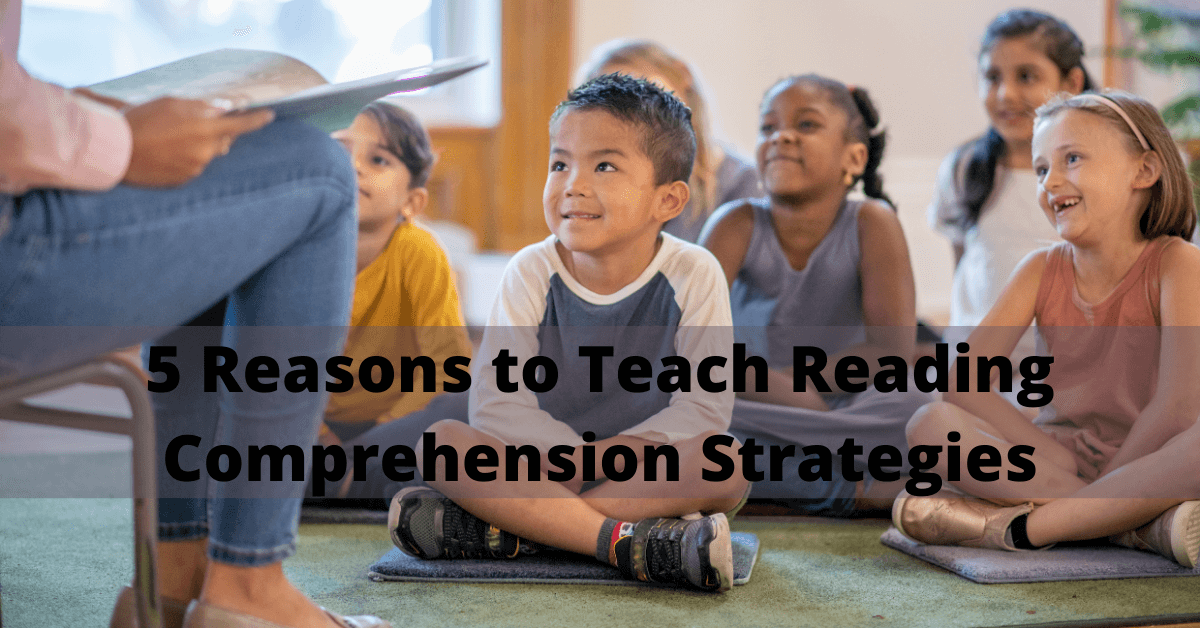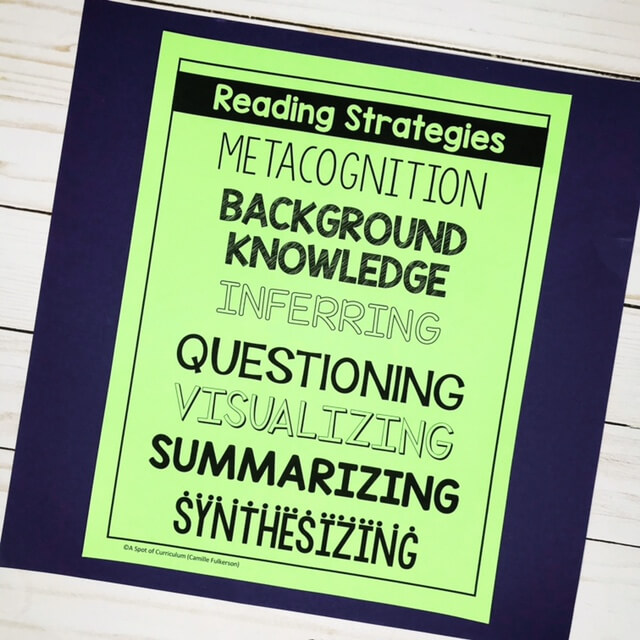Why should you be teaching comprehension strategies? Let's take a journey to the past to find out why.
Who is the main character? What is the setting? Tell me the beginning, middle, and end. When I started teaching reading in 1991, this was all I knew how to do. I read the story with my students, round-robin style, and asked a ton of questions. Most of these questions were printed in the teacher's guide of the basal reader that I was teaching from. At times people would say to me, you need to teach comprehension but I wasn't sure what they meant. I mean how do you teach comprehension? All I knew was how to measure it.

Then I learned about the reading comprehension strategies and they gave me a clearer path to teaching students to comprehend. The reading strategies are metacognition, background knowledge, inferring, questioning, visualizing, summarizing, and synthesizing. These strategies help students actively construct meaning. Below are five reasons you need to devote significant time to teaching reading strategies.
Comprehension is the Goal
We all know that comprehension is the entire goal of reading. Because of this fact, we have to do more than just measure it by asking questions and probing for deeper understanding. Reading strategies should be a big part of our instruction because they make your students better readers. The reading strategies help kids be more thoughtful and intentional when they read. They become active participants in the process of reading. Grab a FREE Reading Strategies Poster here.

Reading Strategies are Hidden Processes
The strategies we use to read are not obvious to students, so they need to be directly taught. Students cannot see how we are thinking about our reading, making connections, asking questions, or making inferences. We do this in our brains and they cannot see them unless we teach them how to think and be strategic readers. Have you ever observed your class when they are reading independently? The entire class is quiet and has a book open. However, when you look more closely, some are actually reading and some are acting like they are reading. Reading takes thinking so we need to teach it. We need to show students these processes by using think-alouds or other methods.
Teaching Strategies Takes Time
It takes a lot of time and modeling for students to use reading strategies. Students must learn what a strategy is, how to use it, and when to use it independently to help them read. It takes a lot of modeling and practice to get to this point especially for students who have not had much modeling of reading.
For example, to teach questioning, you have to teach your students that you ask questions before you read, while you read, and after you read. You ask questions when you don't understand something, when a character acts in a strange way, and you ask I wonder questions too. Another part of questioning you need to teach is how asking questions benefits you as a reader, and also when it helps a reader to stop and ask questions. As you can see, to teach this strategy well, you much devote a lot of time to it.
Text Increases in Complexity
As the demands of a text increase, the student's need to read strategically increases as well. As adults when we encounter a text that is more difficult, we slow down and become more strategic. We slow down and notice when our reading breaks down, we make connections, question, visualize, and make inferences. I know that I begin to point when I come to a spot that is difficult. The more I share these strategies with students, the more they are able to read difficult texts.
Students Need Strategies to Read to Learn
As students approach middle school, they become more responsible for the reading they do in school. They need to be ready to read to learn. In order to read to learn, you must read strategically. Reading to learn involves kids reading and actively synthesizing information and is quite complex. It involves all the reading strategies that we teach.

I hope these five reasons encourage you to make more time in your schedule for teaching comprehension strategies to your students.

